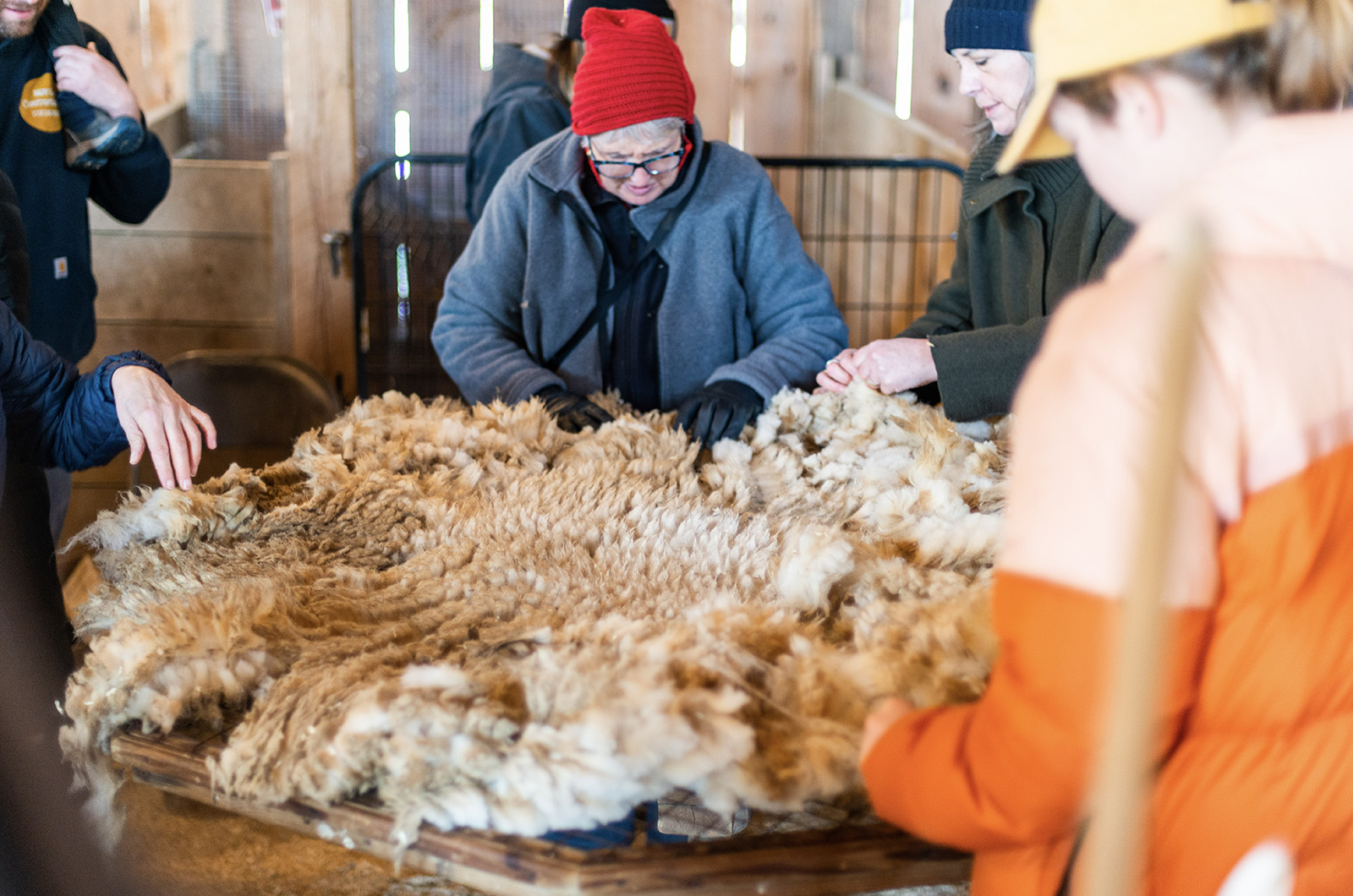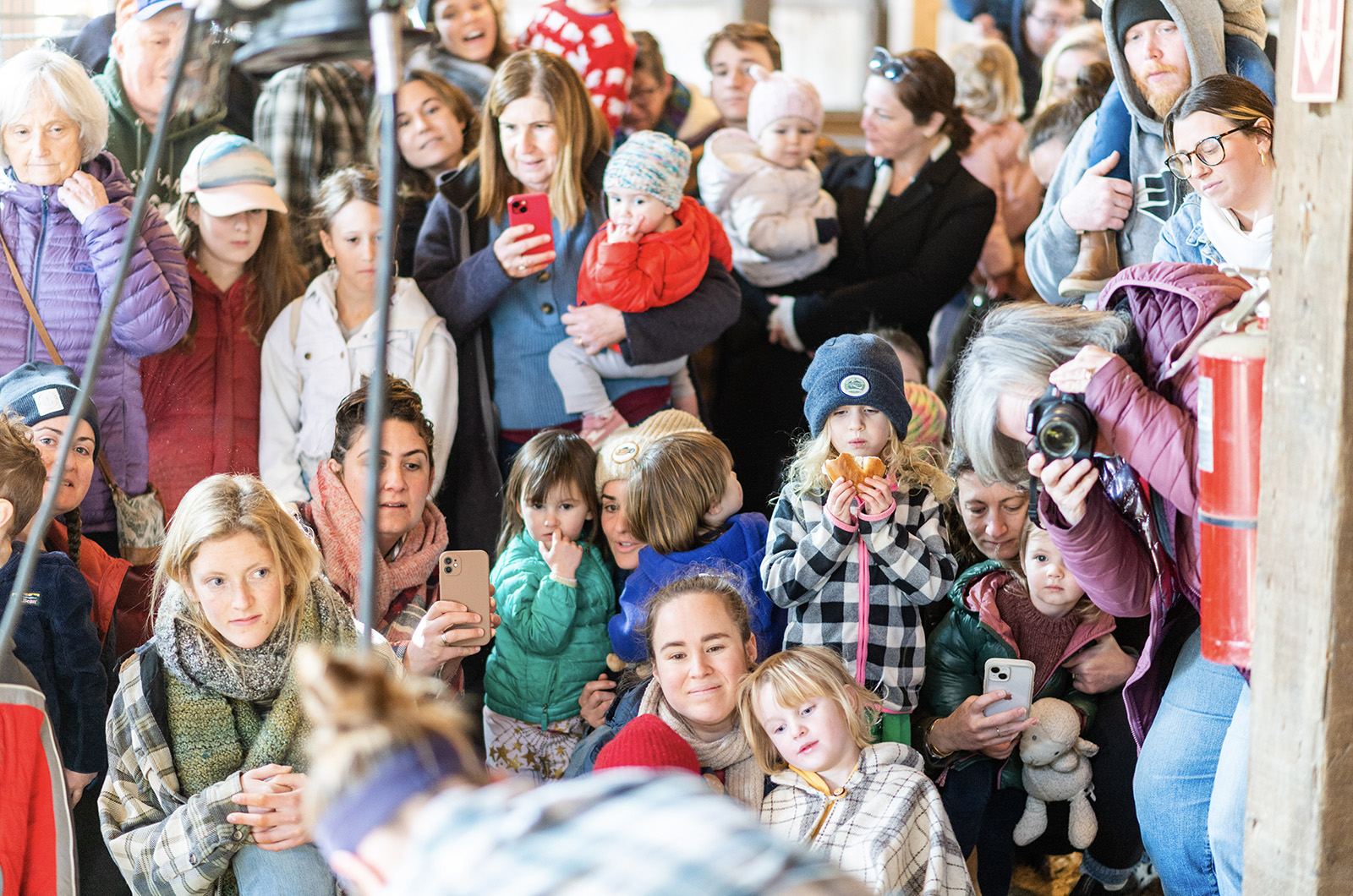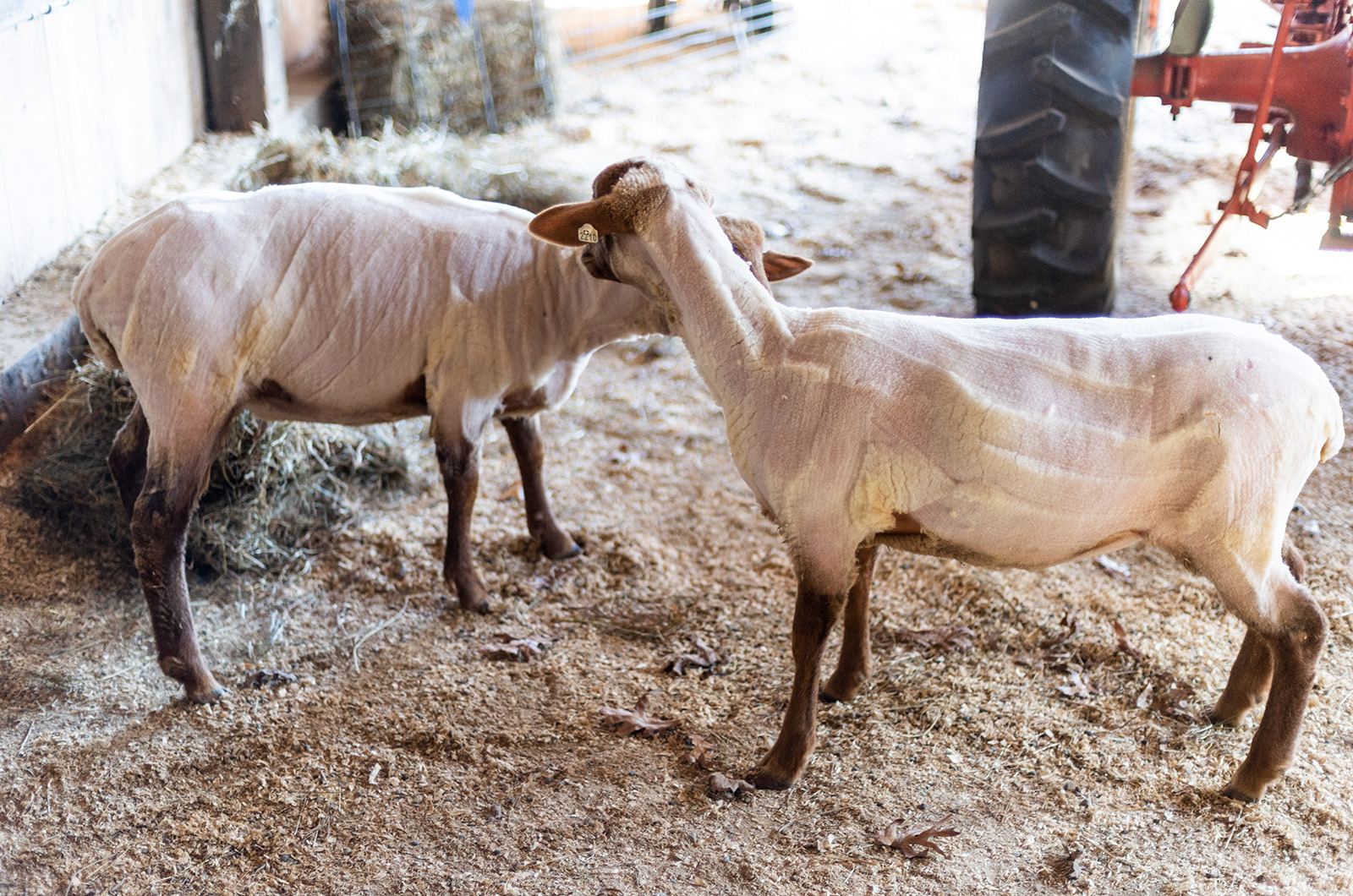The air smelled of straw, sawdust and livestock at the agricultural fairgrounds this Saturday, and the bahs and bleats of sheep mingled with shouts of excited children. It was an interspecies gathering in the barn for the kickoff of Feb-ewe-ary, the Island’s monthlong celebration of all things ovine.
After greeting the day’s participants in stalls along the hallway, visitors gathered around the shearing station at the center of the barn, where Slough Farm executive director Julie Scott introduced the day’s festivities. She tried her best to speak over the sheep, many of whom were nervous for their first-ever haircut.
As younger members of the audience edged their way to the front — or hopped up onto a parent’s shoulders — shearer Siri Swanson of Yankee Rock Farm took the stage.
“You can’t do this job if you don’t love the animals,” said Ms. Swanson, who assuaged concerns that the sheep would be cold without their wool.
“These animals heat themselves through their bellies,” she said, adding that as long as they had plenty of food and shelter, the sheep would be warm and comfortable.
First to be sheared that morning was a light amber Tunis sheep, a yearling, who wagged her little nub of a tail nervously as she was led up to Ms. Swanson.
“I’m going to be doing a bit of a dance with the sheep now,” Ms. Swanson said, as she gently tackled the young livestock to the ground. Her strategy was firm yet gentle, keeping control of the animal and moving as fast as possible.
Haircut complete, the first ewe was moved to a new pen and 4-H Club helpers in mint-green T-shirts hurried in to sweep away the wool.
As the yearling bah-ed away in her new pen, Ms. Swanson hastily began her next shear. A social species, sheep dislike being away from the flock. Having an additional ewe in the pen made the first sheep happier and the barn quieter.
Another ewe brought up to the platform, a young mother destined to give birth within the next two months, revealed the reason the animals are sheared this time of year.
“The lambs will mistake the tufts of wool for nipples,” Ms. Scott explained.
In addition, the longer sheep keep their wool, the dirtier it becomes.
Once sheared, the wool was moved over to a large, circular skirting table. The table was on loan from the Allen Farm, and Ms. Scott guessed that it was older than anyone present.
The skirting process, explained Island fiber enthusiast Liz Toomey, is about separating the wheat from the chaff.
“The sheep can get really disgusting,” Ms. Toomey said, while separating out bits of waste wool soiled with urine and manure.
One skirter, Amy DuFault of the Southeastern New England Fibershed, has made it one of her missions to find uses for these so-called waste materials, exploring ways to use it as insulation or fertilizer. She helps connect farmers with resources to pool and process their wool.
Nora Kyle from Martha’s Vineyard Museum was also there, educating attendees on the historical process of turning wool to thread. The Island has a long history of wool production and many of the tools of the trade can be seen at this month’s new exhibit at the museum.
“I’m convinced that it was discovered thousands of years ago by a little girl doing this,” Ms. Kyle said, twisting her hair around her finger. “They must have said ‘wow, it stays together!’”
The same basic process, Ms. Kyle said, is used to twist wool fibers together.
Eventually, the excitement in the barn quieted down as the sheep, one by one, received their cuts and joined the rest of the flock. They were much happier together, in a pen furnished with nutritious hay, feeling the cool breeze on their newly-shorn skin.










Comments
Comment policy »